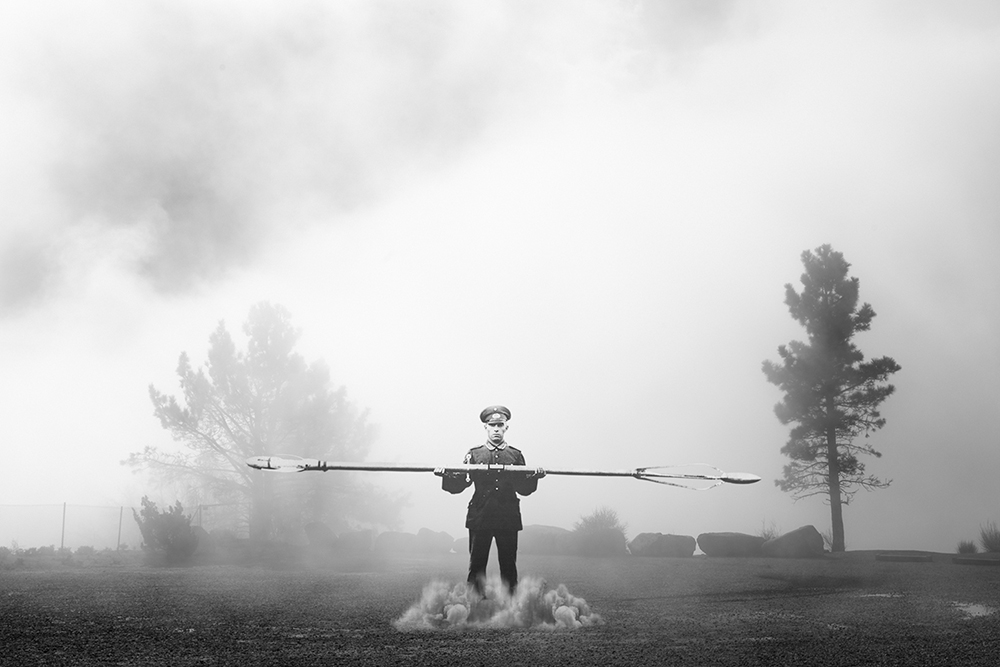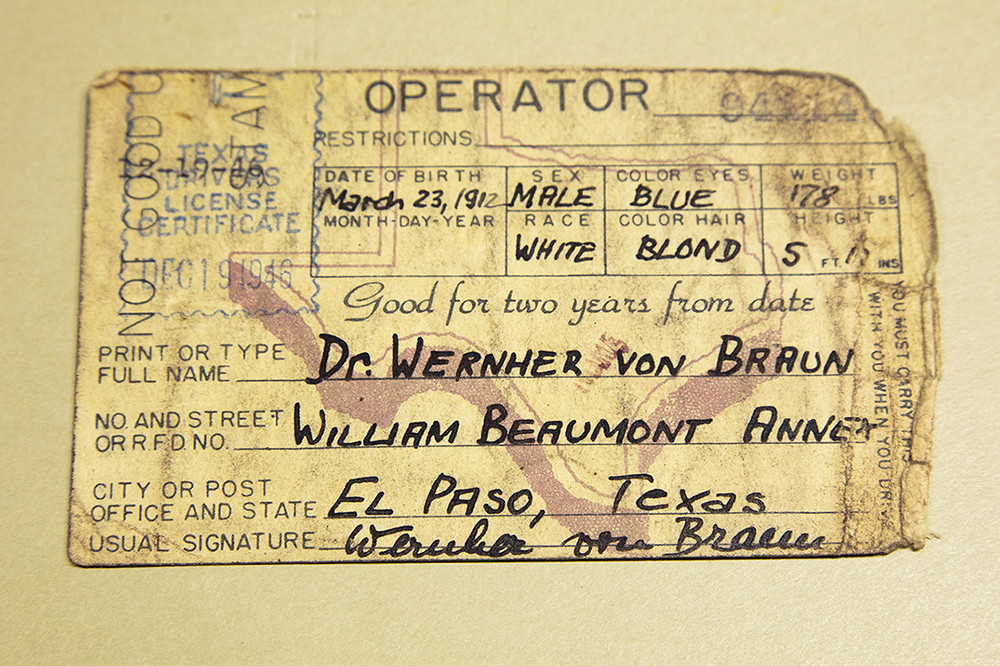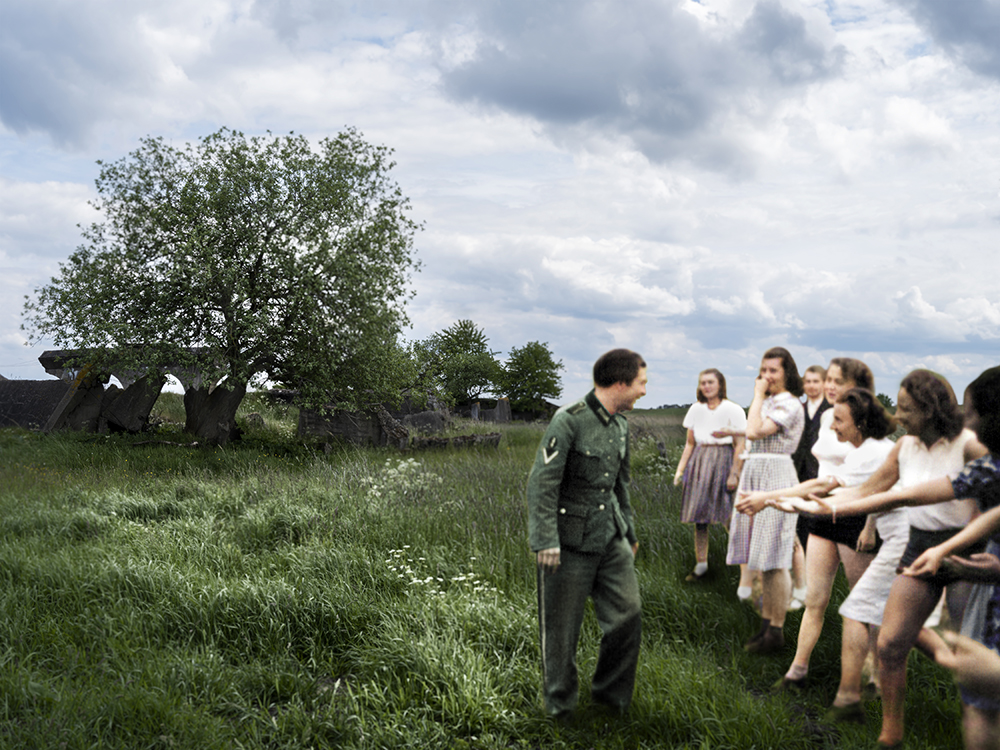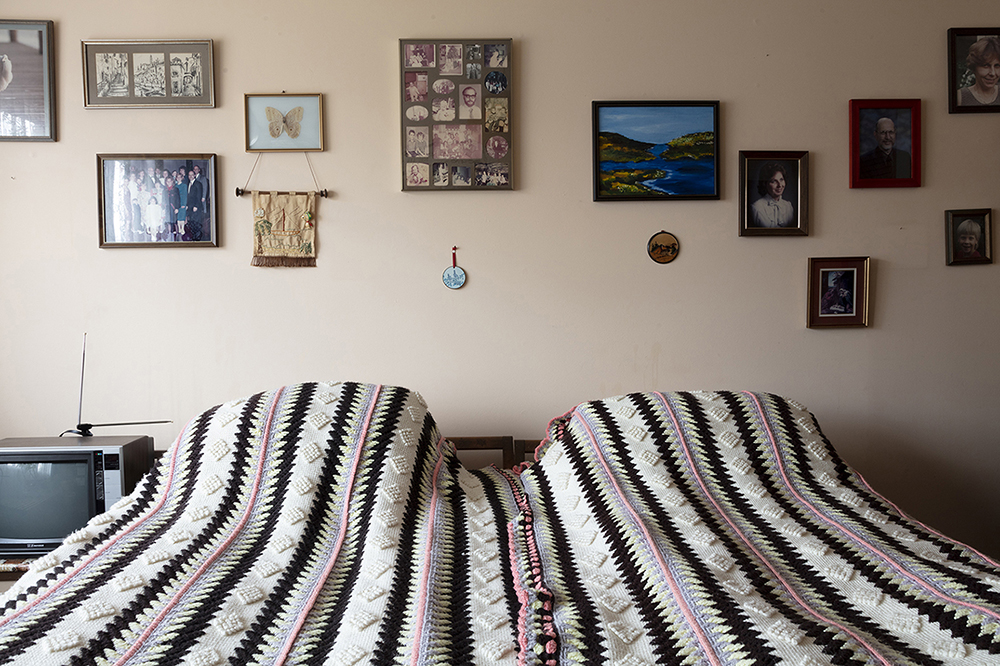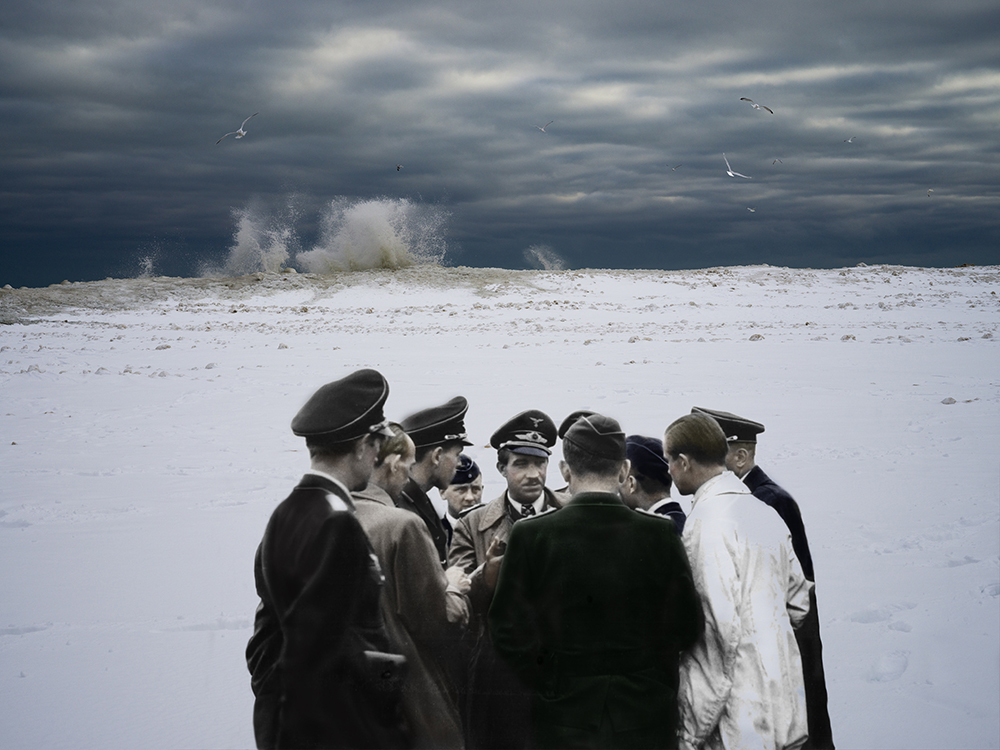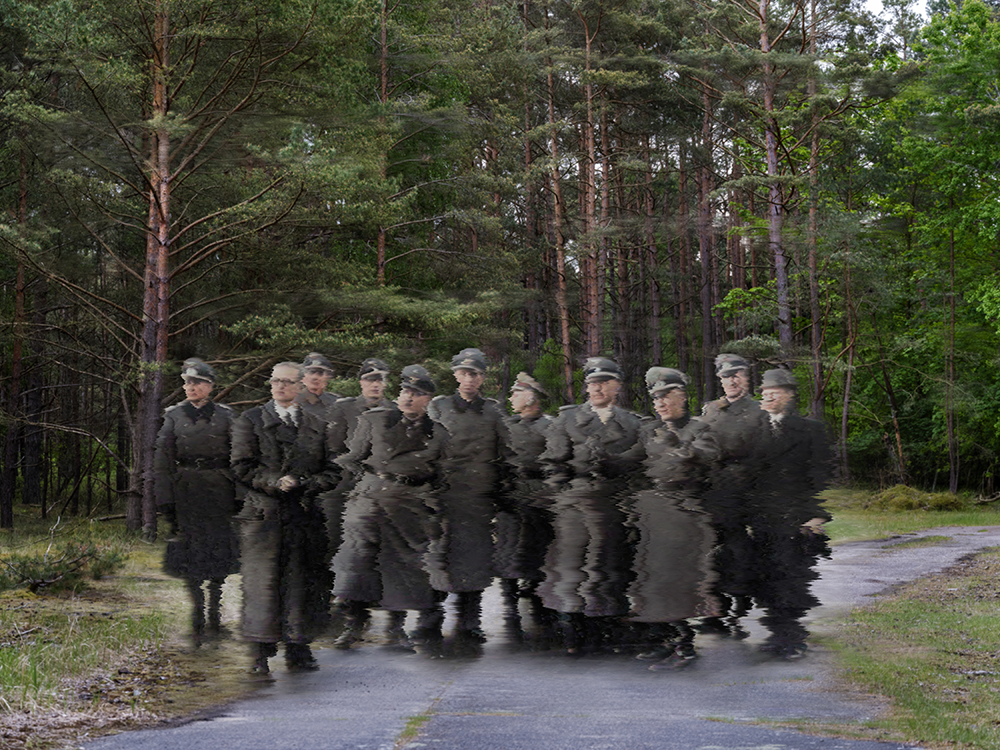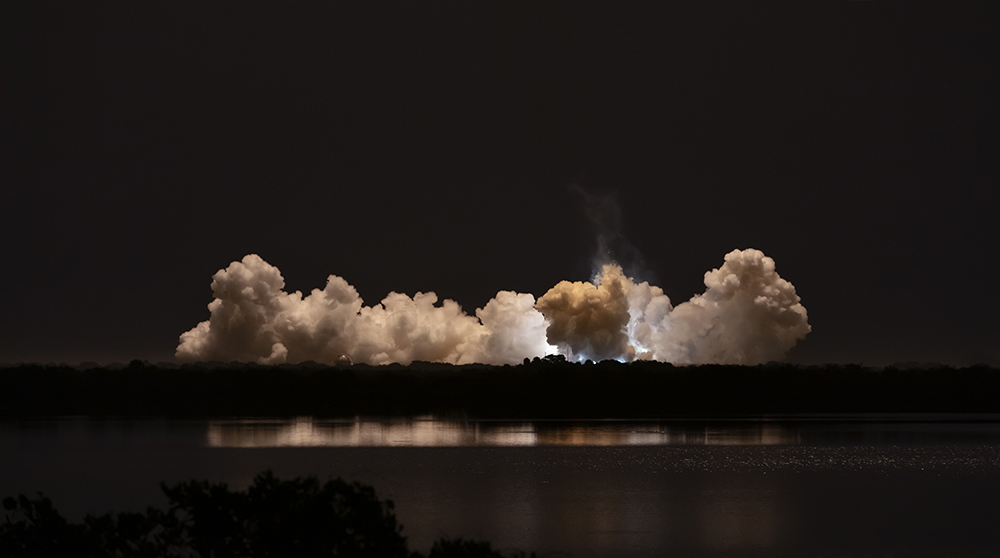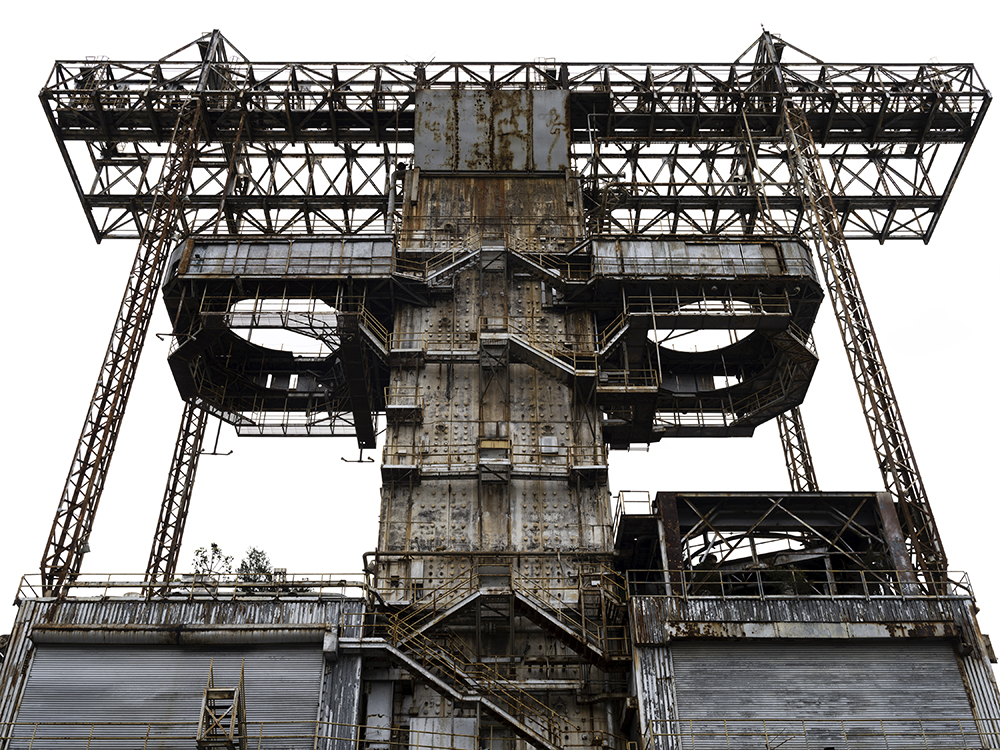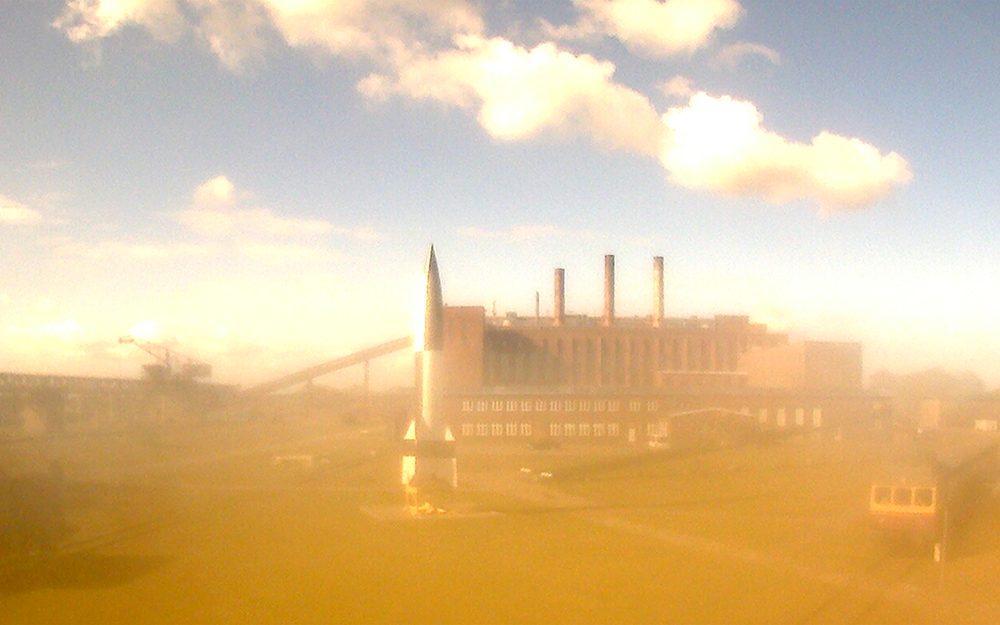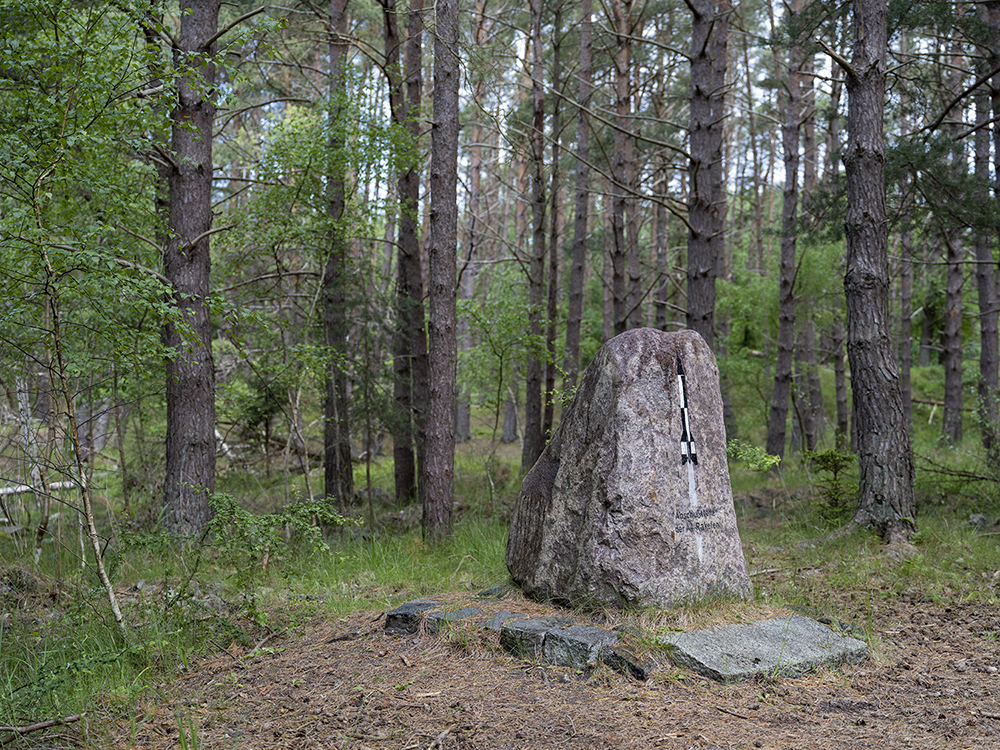Atomic Reactions: Barbara Diener, The Rocket’s Red Glare
Barbara Diener is not a dispassionate chronicler, she evokes rather than records late 20th century history in her book, The Rocket’s Red Glare. Anchored by landscapes, ephemera and quotes of the rocket scientist, Wernher von Braun, Diener demonstrates that history, like nature, “does not know extinction: all it knows is transformational.”
Composites of snapshots in discordant landscapes juxtapose with the leaden light illuminating her photographs of factories and facilities, leaving the viewer adrift in time and space. What might be considered evidence in her visual narrative is frequently obscured by dazzling light, cold darkness and the explosive clouds of igniting rocket fuel. Throughout the book, stacks of documents printed on both sides of vellum obscure the facts they might provide. All these metaphorically charged elements mingle to create a vivid sensory experience of human history, but within it, “There is ample cause for uneasiness.”
Project Statement: The Rocket’s Red Glare uses the life of instrumental German rocket scientist, Wernher von Braun, to explore the selective way history is told. This series challenges the often dual retelling of significant 20th century events, starting in Nazi-era Germany and culminating in the moon landing. My interest in interpreting this chain of events comes from my own reckoning with history and my complicated German heritage surrounding World War II.
I was born and raised in Germany to an American mother and German father. The latter, who passed away in 2007, was a young boy during World War II. It was hard for him to talk about the war and therefore unclear to me where my family fit into that historical moment. As far as I know my grandfather and uncle did not join the Nazi Party but both fought on the German side. My uncle was 18 when he was wounded during the last days of the war and died shortly after of his injuries.
My complex feelings about my heritage are embodied in Wernher von Braun’s life. A Nazi turned NASA scientist, von Braun’s life was filled with as much contradiction as his groundbreaking rockets were, which were used as missiles and spacecraft alike. In 1932, Wernher von Braun went to work for the German army, which fell under National Socialist rule the following year. Accounts of the exact year he joined the Nazi party vary, but by 1937 he was the technical director of the Army Rocket Center in Peenemünde where the V2 rocket (Vengeance Weapon 2) was created and tested. These missiles, which bombed London, were manufactured in an underground factory by slave laborers who endured horrific conditions if they survived. Much of Wernher von Braun’s Nazi past was classified for decades to celebrate his contribution to the U.S. space race eg. as the chief engineer of the Saturn V, the rocket that took man to the moon.
Rather than presenting a complete view of this history, I leave intentional holes in the narrative. These gaps serve as questions, looking at how stories pass through generations and how facts are distorted, embellished or undermined.
LL: What led you to create this book? Please elaborate on when and what aspects of the immigrant experience of your German heritage influenced you to make Rocket’s Red Glare.
BD: I was born and raised in Germany to an American mother and German father. The latter, who passed away in 2007, was a young boy during World War II. It was hard for him to talk about the war and therefore unclear to me how my family fit into that historical moment. As far as I know my grandfather and uncle did not join the Nazi Party but both fought in the war on the German side. My uncle was 18 when he was wounded during the last days of the war and died shortly after of his injuries.
Growing up in Germany we studied the Holocaust and World War II in history class and it was very much approached from a “do not let history repeat itself” point of view. I did not actually learn about Wernher von Braun and Operation Paperclip—the controversial government initiative to find and extract German scientists and bring them to the United States—until I had lived in the US for many years. Once I learned more about this aspect of post-WWII history, I was instantly fascinated by the way in which certain facts were swept under the rug to further a specific agenda. My complex feelings about my own German heritage are embodied in von Braun’s life. A Nazi turned NASA scientist, von Braun’s life was filled with as much contradiction as his groundbreaking rockets were, which were used as missiles and spacecraft alike. Much of his Nazi past was classified for decades to celebrate his contribution to the U.S. space race.
From the start this project involved a lot of research, visiting archives, and incorporating archival materials, so I envisioned it as a book early on.
LL: For me, your images have both intimacy and an ephemeral quality. In Rocket’s Red Glare you interleave facsimile documents, documentary photographs and what seems to be manipulated images. You state your strategy for bringing these disparate elements together is to create gaps which “serve as questions, looking at how stories pass through generations and how facts are distorted, embellished or undermined.”
Can you discuss your editing process?
BD: Since the history I am interpreting with this project is so layered and complicated it made sense to reflect this in my multi-faceted approach to image making and the inclusion of archival materials. In editing for the book I wanted a balance between straight photographs that anchor the work into specific historical locations—Peenemünde, Huntsville, Cape Canaveral—and images that function on a metaphorical level. The archival materials supply some of the historical facts while my composites question photography’s tenuous, and now often challenged, relationship with the truth. I worked with graphic designer Hans Gremmen, whose imprint Fw: Books also published the book, and he helped me cut images that I liked visually but just did not work in the context of the book. Arriving at the final edit was a collaborative process.
LL: You use Wernher von Braun’s words to describe the relationship between science, technology and humanity, but you have chosen to not to include background information about this contradictory character who was the Nazi director of the lethal V2 rocket program and later, the lunar visionary guiding the NASA Saturn V rocket program which landed Neil Armstrong on the moon. Can you tell us about how you came to that decision?
BD: During my first visit to the Wernher von Braun Archive in Huntsville, Alabama I found a short story, Lunetta, that von Braun had written at age 17. It celebrates science’s accomplishments and demonstrates his early interest in space exploration with slight undertones of desire for power and control. I knew I wanted to use quotes from the short story in the book but I also considered an essay by a historian who could provide the background information. I decided against the essay because I wanted to maintain a sense of discovery and mystery and let the viewer draw some of their own conclusions. I do not view this series as a documentary project, at least not in the traditional sense. I have taken liberties in interpreting this historical moment and often manipulate and retouch archival images, changing how we understand them in the context of time, geography and the records about von Braun’s life. I am drawn to the final product for its ambiguity and potential to take on new and unexpected meanings. For example, by removing a figure from its original context and placing it into a different landscape I merge the two places—Germany and the United States—and the two different timelines to create a new representation of truth and national identity. Instead of the historian’s essay I decided to include newspaper clippings from the years after WWII that address the potential dangers and controversies of German scientists working on US missiles and rockets. They are printed on transparent paper, so some of the information is obscured and blends together, further referencing the idea of classified documents being declassified and new facts coming to light and being revealed over time. Additionally I have highlighted sections in each article to guide the viewer.
On my most recent trip to Huntsville earlier this year I visited the archive at NASA’s George C. Marshall Space Flight Center, where von Braun was the director from 1960–1970. I came across a speech he delivered in front of the International Christian Leadership World Conference in 1965. von Braun became very religious after settling in the US and this speech tries to dissuade any notions that science and religion might be at odds with each other and stresses the importance of scientific discoveries. At the same time von Braun implies that once said discoveries are publicized the responsibility of their uses no longer lies with the individual scientist.
One of the most poignant quotes to me: “The blame for wrongful use of force cannot be pinned on science. Science, all by itself, has no moral dimension.”
It felt appropriate to use Wernher von Braun’s own words to emphasize my thesis—he was a ruthless opportunist who wanted to explore space and put his scientific advancements above all else, including human life.
LL: For those of us who want to know more about von Braun’s life and the post war German emigration experience, can you direct us to some sources?
Peenemünde Historical Technical Museum
Michael J. Neuffeld, von Braun: Dreamer of Space, Engineer of War
Operation Paperclip: The CIA’s Secret Program to Bring Nazi Scientists to America by Annie Jacobsen
Wernher von Braun, The Mars Project
Our Germans: Project Paperclip and the National Security State
Born in 1982 in Germany Barbara Diener received her Bachelor of Fine Art in Photography from the California College of the Arts and Masters of Fine Art in Photography from Columbia College Chicago.
Her work has been exhibited at Filter Photo Space, Chicago, IL; the Museum of Contemporary Photography, Chicago, IL; Hyde Park Art Center, Hyde Park, IL; Alibi Fine Art, Chicago, IL; David Weinberg Gallery, Chicago; New Mexico Museum of Art, Santa Fe, NM; Griffin Museum of Photography, Winchester, MA, Invisible Dog Gallery, Brooklyn, NY; Lilllstreet Art Center, Chicago; Riverside Art Center, Chicago, IL. Pingyao Photo Festival, China, The Arcade, Chicago, IL, Philadelphia Photo Arts Center, Philadelphia, PA, Darkroom Gallery, Essex Junction, VT and Project Basho, Philadelphia, PA among others. Diener’s photographs are part of several private and institutional collections including the New Mexico Museum of Art and the Museum of Contemporary Photography.
Diener has participated in several artist residency programs including the Fields Project in Oregon, IL, ACRE in Steuben, WI and HATCH Projects through the Chicago Artist Coalition. She is a winner of Flash Forward 2013, the recipient of a Follett Fellowship at Columbia College Chicago and was awarded the Albert P. Weisman Award in 2012 and 2013. In 2015, 2017, and 2020 she received an Individual Artist Grant from the Chicago Department of Cultural Affairs and Events.
Daylight Books published her body of work Phantom Power in 2018 and Fw: Books published her work The Rocket’s Red Glare in 2023.
Barbara Ciurej and Lindsay Lochman are photographic collaborators. As an extension of their long-term examination of the landscape, their new book, BOMBSHELLS, addresses sex and death in the nuclear age.
Instagram: @barbandlindsaycollaborate
Barbara Ciurej and Lindsay Lochman are photographic collaborators. As an extension of their long-term examination of the landscape, their new book, BOMBSHELLS, addresses sex and death in the nuclear age.
Website: www.ciurejlochmanphoto.com
Instagram: @barbandlindsaycollaborate
Posts on Lenscratch may not be reproduced without the permission of the Lenscratch staff and the photographer.
Recommended
-
Paccarik Orue: El MuquiDecember 9th, 2025
-
Lauri Gaffin: Moving Still: A Cinematic Life Frame-by-FrameDecember 4th, 2025
-
Dani Tranchesi: Ordinary MiraclesNovember 30th, 2025
-
Art of Documentary Photography: Elliot RossOctober 30th, 2025
-
The Art of Documentary Photography: Carol GuzyOctober 29th, 2025

